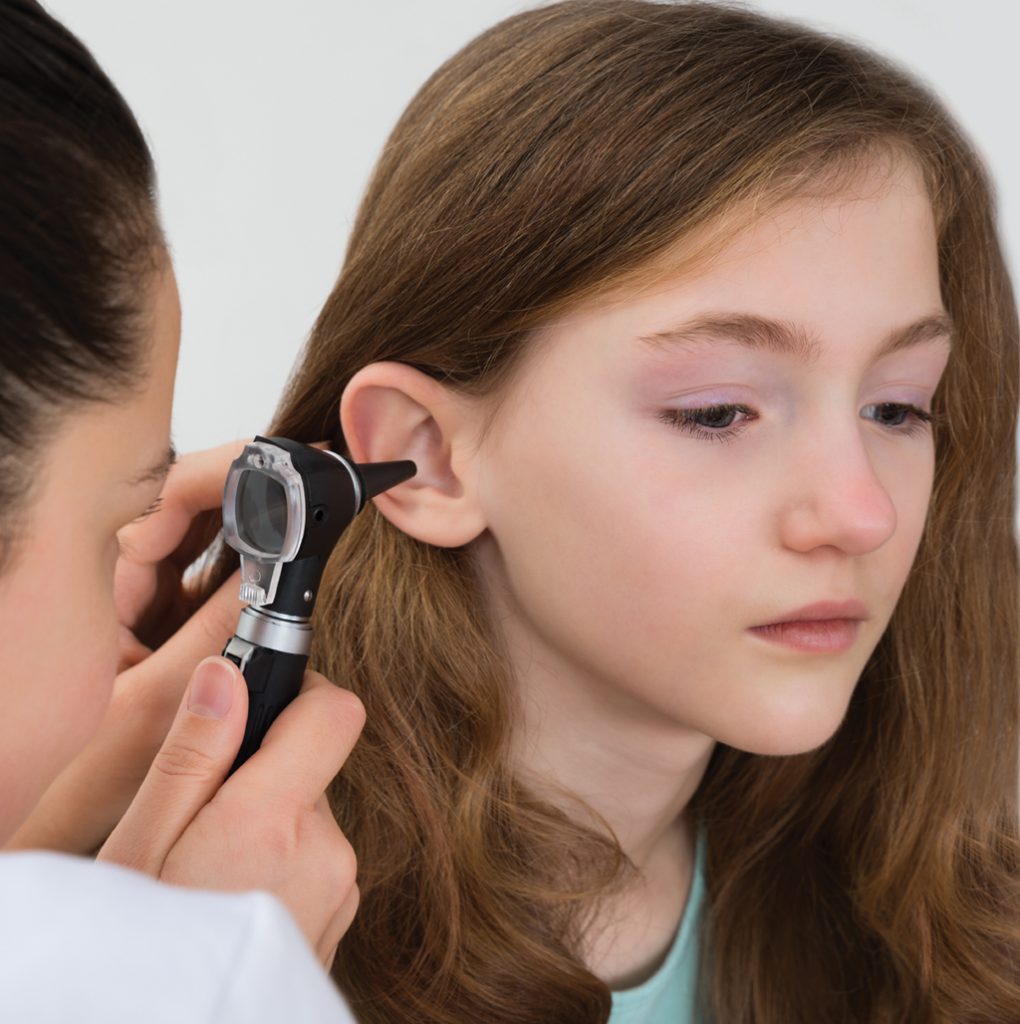Children are prone to ear, nose and throat conditions as many structures in the region are immature and predisposed to poor functioning. Find out what can be done to alleviate the symptoms and prevent these problems from developing into the health hazards.

Impacted Earwax
This occurs when a child’s own earwax has been ‘forced’ into the ear. While many Westerners are familiar with the saying, “Don’t put anything smaller than your elbow into your ear”, many other cultures try to remove earwax. It is very common to see children whose parents — while thinking that ears need to be cleaned — have actually pushed and impacted the wax deeper into the child’s ear.
The ears are designed to be self-cleaning and should not be disturbed. Skin in the ear canal does not simply flake into the canal. It is designed to migrate outwards like a conveyor belt, pushing wax outwards at the same time. Inserting anything into the ear canal obstructsnthis natural process. Earwax is waterproof, insect-proof, and has antiseptic properties. Removing the wax leaves the externalear vulnerable to infection and insects that try to enter. Also, wax removal may cause damage or trauma to the eardrum and canal. Ear cleaning may also introduce bacteria which can cause infection.
What to do?
- No cleaning of ear canals at home. Do not use diggers or cotton buds
- If the earwax doesn’t cause any problems, do not worry about wax in ears. Simply check if the child is hearing well and ask if he has any ear pain
Ear Infections
Paediatric ear infections (external ear and middle ear) are quite common in Singapore. The external ear (approximately 2.5cm long) stops eardrum. External ear infections are commonly inflicted by ear-digging, leading to trauma and introduction of bacteria. Damaged skin in humid conditions (like Singapore’s) is fertile ground for fungal growth. Skin lacking the waterproof benefit of earwax is highly prone to bacterial and fungal infection.
Middle ear infection (otitis media) is also common. The middle ear is the air-filled space behind the eardrum. In a normal ear, the pressure in the middle ear is the same as environmental pressure. The middle ear is connected to the back of the nose by the Eustachian tube (ET), which equalises pressure, ventilates, and drains away any fluid in the middle ear.
Children’s ETs run almost horizontally across their head, which affects the ability of the ET to equalise and drain the middle ear fluid properly. Children’s ETs are very short, so there is only a short distance for the infection to spread from the nose to the middle ear. Adenoids in children are also relatively larger than in adults, and these may block the ET opening, leading to ET dysfunction. Acute middle ear infection (otitis media) may occur when fluid in the middle ear becomes infected and develops mucopus, which builds up and may cause perforation of the eardrum.
Glue ear (serous otitis media) does not usually cause pain but it can cause hearing problems and speech delay. Glue ear is caused by ET dysfunction. If fluid in the middle ear is not properly drained, it can build up inside the middle ear and prevent the eardrum from vibrating properly, and this can cause significant conductive hearing loss.
These ear problems become less common as the child grows,and the ET grows longer and angles downwards (closer to a vertical position), making him or her less prone to middle ear infections.
What to look out for?
- Ask the child if he feels pain in the ears
- When infants and toddlers (who cannot express themselves), cry for no apparent reason and hold or pull their ears, especially at night
- Hearing loss or delayed speech
Epistaxis
A confluence of blood vessels are found at the anterior part of the nasal septum known as the Little’s area. Some children may have bigger blood vessels at the Little’s area, which are prone to rupture and hence nose bleeding. This is the most common cause of paediatric nose bleeding and can last up to several minutes.
Trigger factors of nose bleeding are hot and dry environments, nose picking, rubbing and blowing, sneezing, infections, and trauma.
What to do?
- Advise child against rubbing, picking or blowing nose too hard
- Stop nosebleed by applying firm pressure. Pinch the lower soft part of the nose and breathe through the mouth until bleeding stops. Many patients pinch the upper bony part of the nose, which is incorrect. Tilting the head back is also incorrect as it only causes blood to flow into the back of the nose and throat, making it seem that bleeding has stopped. This means that no one knows the amount of blood loss as the child may be swallowing the blood
- Seek your paediatric ENT for opinion to exclude other causes of epistaxis. If the epistaxis fails to resolve with conservative treatment, cautery of the blood vessels may be required







